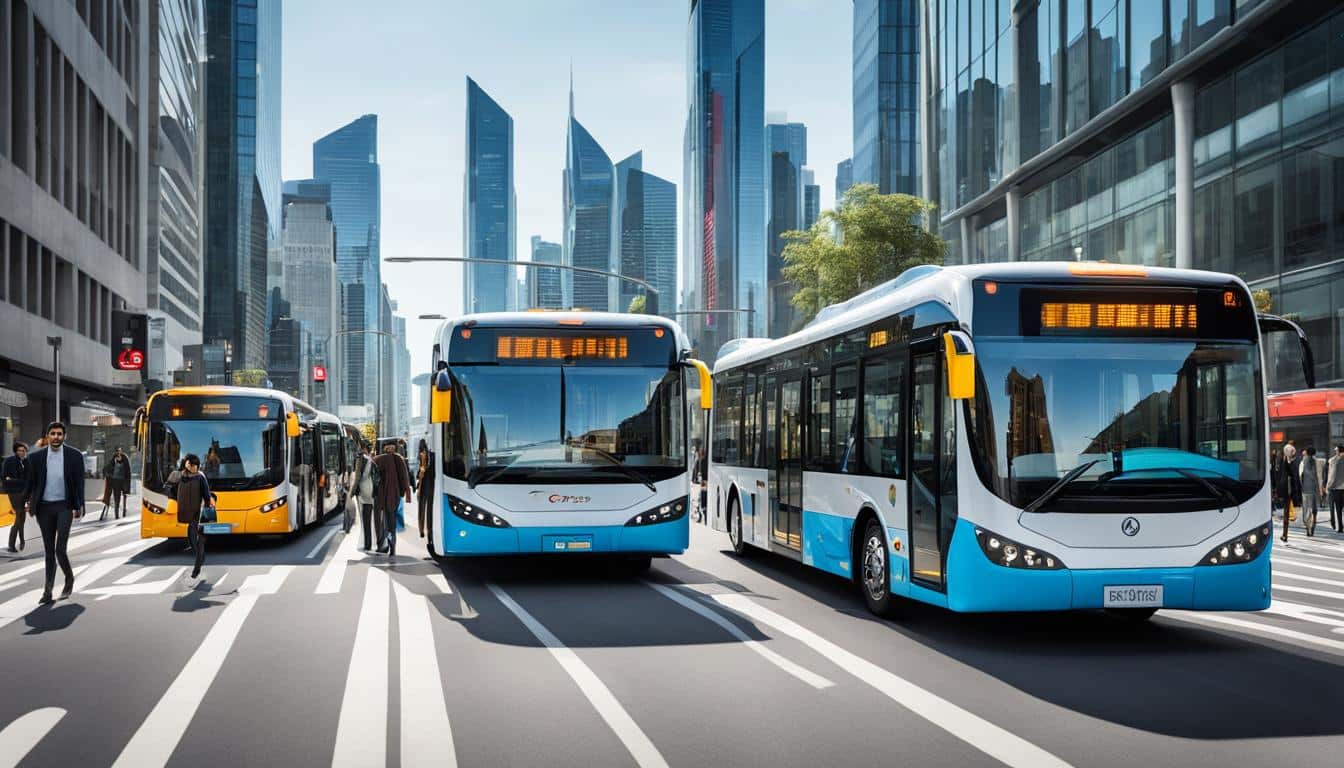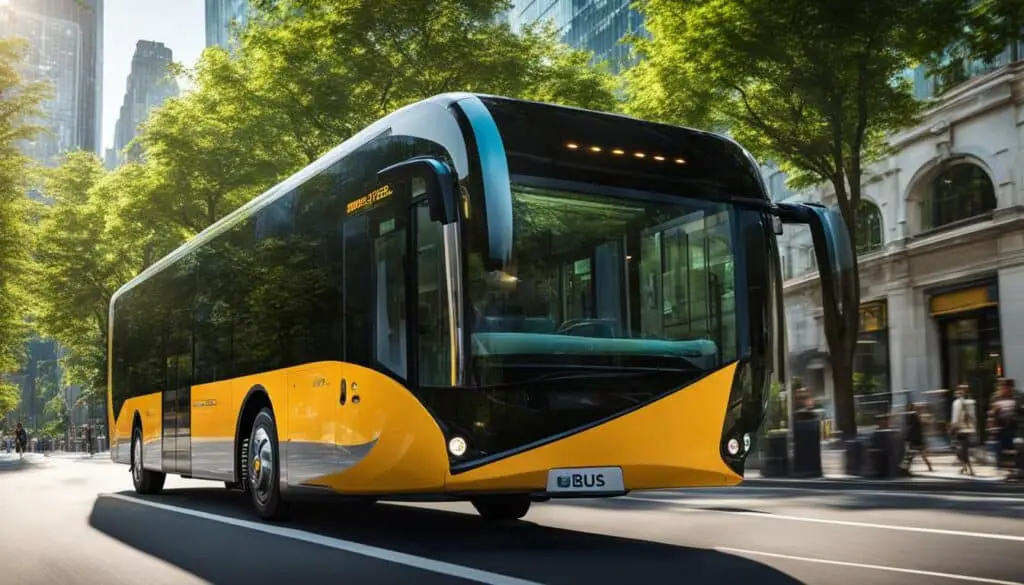
Artificial Intelligence in Public Transport: A New Journey
The impact of AI on public transport systems has been transformative, revolutionizing travel efficiency and safety. With advancements in AI technology, public transportation networks have become smarter and more efficient, enhancing the overall experience for passengers. This article explores the various ways in which AI has impacted public transport systems, from optimizing route planning to improving passenger safety and reducing energy consumption.
Key Takeaways:
- AI has revolutionized travel efficiency and safety in public transport systems.
- Optimized route planning and traffic management have become possible with AI technology.
- Enhanced passenger safety and security are achieved through AI-powered solutions.
- AI improves the efficiency and sustainability of public transport operations.
- The future of AI in transportation holds promise for autonomous vehicles and smart networks.
Optimized Route Planning and Traffic Management
AI has revolutionized route planning and traffic management in public transport systems, delivering optimized routes and minimizing congestion for efficient travel. By utilizing sophisticated algorithms and real-time data analysis, AI enables transportation networks to make data-driven decisions and adapt dynamically to changing conditions.
When it comes to route planning, AI algorithms consider various factors such as current traffic conditions, passenger demand, and public events to determine the most efficient routes. By analyzing these data points, AI can optimize public transport routes, reducing travel times and alleviating traffic congestion. This ensures that commuters and travelers can reach their destinations faster and with minimal delays.
Furthermore, AI-powered traffic management systems improve coordination between different modes of transportation, such as buses, trains, and trams. This seamless interconnectivity enables a smoother flow of traffic and enhances overall network efficiency.
In addition to optimizing routes and managing traffic flow, AI plays a crucial role in reducing environmental impact. By efficiently managing public transport systems, AI reduces the number of vehicles on the road, leading to lower emissions and improved air quality.
Benefits of AI in Route Planning and Traffic Management:
- Optimized routes resulting in reduced travel times and improved efficiency.
- Minimized traffic congestion and increased reliability of public transport services.
- Enhanced coordination between different modes of transportation, facilitating seamless interconnectivity.
- Reduced environmental impact through effective management of public transport systems.
AI’s impact on route planning and traffic management has transformed the public transport experience, offering optimized routes, reduced congestion, and improved overall network efficiency. As AI technology continues to advance, the future holds even greater potential for further advancements in public transport systems.
Enhanced Passenger Safety and Security
When it comes to public transport systems, passenger safety and security are top priorities. With the advancements in Artificial Intelligence (AI), these measures have been significantly enhanced to provide a safer and more secure travel experience for commuters.
AI technology has introduced various innovative solutions to detect and prevent criminal activities in public transport networks. One such application is facial recognition technology, which analyzes facial features to identify potential threats and prevent incidents from occurring. By leveraging AI algorithms, transit authorities can proactively detect individuals with a history of antisocial behavior, ensuring a safer environment for all passengers.
Another critical aspect of passenger safety is the identification and mitigation of potential safety risks in vehicles. This is where AI-powered predictive maintenance systems come into play. These systems analyze data from various sensors and connected devices to identify any abnormalities or malfunctions that could compromise passenger safety. By detecting these issues in advance, maintenance can be scheduled promptly, reducing the chances of breakdowns or accidents.

Real-time surveillance systems, powered by AI, play a vital role in monitoring and ensuring passenger safety. These systems analyze video feeds in real-time, allowing security operators to quickly respond to incidents or emergencies. By utilizing AI algorithms, these surveillance systems can identify suspicious behavior, detect unattended baggage, and promptly notify authorities, enhancing the overall security of public transport networks.
“AI-powered surveillance systems enable operators to quickly respond to incidents and ensure the safety of passengers, creating a safer environment for all.”
With AI algorithms constantly monitoring and analyzing data, potential safety threats can be detected and addressed proactively. This proactive approach allows transit authorities to take the necessary measures to prevent incidents before they occur, creating a robust and secure public transport system.
| Enhanced Passenger Safety and Security | AI Solutions |
|---|---|
| Facial recognition technology | Identifies individuals with a history of antisocial behavior and potential threats |
| Predictive maintenance systems | Detects and mitigates potential safety risks in vehicles |
| Real-time surveillance systems | Monitors video feeds to quickly respond to incidents and emergencies |
Efficiency and Sustainability in Operations
The implementation of Artificial Intelligence (AI) has had a profound impact on the efficiency and sustainability of public transport operations. Through the power of predictive analytics and machine learning algorithms, AI has revolutionized energy consumption optimization, maintenance scheduling, and resource allocation in the transportation industry.
One of the key benefits of AI in public transport operations is the ability to optimize energy usage. AI-powered systems can automatically adjust lighting, ventilation, and temperature in vehicles and stations based on real-time data analysis. By doing so, energy waste is minimized, leading to a more sustainable and environmentally friendly transport system. Moreover, passengers can enjoy enhanced comfort and convenience.

Another significant contribution of AI is the improvement of maintenance operations. AI-powered maintenance systems can detect potential faults and schedule maintenance activities in real-time. By proactively addressing maintenance issues, downtime is minimized, ensuring a reliable and efficient public transport fleet. This not only enhances operational performance but also improves the overall passenger experience.
To further enhance efficiency, AI-based demand forecasting models are employed in public transport systems. These models analyze data from various sources, including historical data, real-time passenger flows, and external factors, allowing transport authorities to better allocate resources and reduce overcrowding. By optimizing service frequencies, vehicle capacities, and staffing levels, public transport networks can provide a more efficient and comfortable travel experience for passengers.
To summarize, AI has significantly contributed to the efficiency and sustainability of public transport operations. By optimizing energy consumption, improving maintenance operations, and enhancing resource allocation, AI has transformed the way transport systems operate. The benefits extend beyond operational efficiencies, positively impacting passenger experience and the environment as well.
Conclusion
The impact of AI on public transport systems has been immense, revolutionizing travel efficiency, safety, and sustainability. AI-powered technologies have transformed the way we experience public transportation, offering optimized routes, improved passenger safety and security, and energy-efficient operations.
As technology continues to advance, the future of AI in transportation holds even greater promise. With the potential for autonomous vehicles and smart transportation networks, AI will further enhance the efficiency and reliability of public transport systems.
Embracing AI technologies in public transport brings a range of benefits. It enables improved efficiency by optimizing route planning and traffic management, reducing travel time and congestion. AI also ensures enhanced passenger safety and security through facial recognition systems, predictive maintenance, and real-time incident response. Additionally, AI-driven operations contribute to a more sustainable environment by optimizing energy consumption and reducing overcrowding.
In conclusion, AI plays a pivotal role in shaping the present and future of public transport. By harnessing the benefits of AI, transport authorities can continue to evolve towards seamless and sustainable journeys for commuters and travelers, combining efficiency, safety, and environmental responsibility.
FAQ
How has AI impacted public transport systems?
AI has revolutionized public transport systems by improving travel efficiency and safety.
What role does AI play in route planning and traffic management?
AI utilizes sophisticated algorithms and real-time data analysis to optimize routes and reduce congestion, resulting in faster and more reliable public transport services.
How has AI enhanced passenger safety and security in public transport?
AI has improved passenger safety and security through facial recognition technology, predictive maintenance systems, and real-time video surveillance.
How does AI contribute to efficiency and sustainability in public transport operations?
AI optimizes energy consumption, schedules maintenance activities, and enables better resource allocation, leading to improved efficiency and reduced environmental impact.
What are the benefits of AI in public transport?
AI improves efficiency, reduces environmental impact, enhances passenger experience, and has the potential for future advancements like autonomous vehicles and smart transportation networks.
Source Links
- https://www.euractiv.com/section/energy-environment/opinion/tackling-challenges-around-green-transition-in-the-western-balkans/
- https://www.nationalhealthexecutive.com/articles/nihr-launches-ps30m-competition-nhs-trusts-level-research-capacity
- https://finance.yahoo.com/news/coffee-class-hits-200k-milestone-124700497.html
